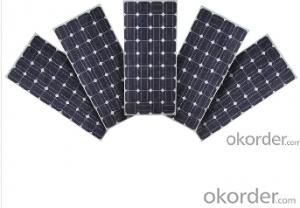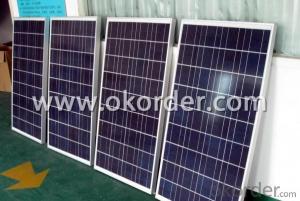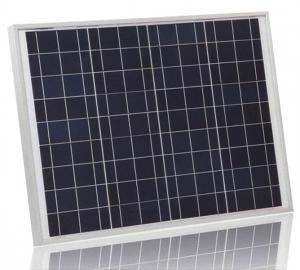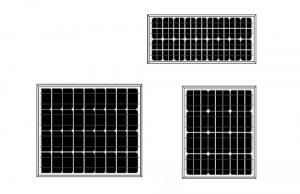Teco Solar Panels - 290W CNBM Solar Polycrystalline Series III (280W—295W)
- Loading Port:
- China main port
- Payment Terms:
- TT OR LC
- Min Order Qty:
- 10000 watt
- Supply Capability:
- 500000 watt/month
OKorder Service Pledge
OKorder Financial Service
You Might Also Like
Specification
CNBM Solar Polycrystalline Series III (280W—295W)
Characteristics
Max Power Voltage Vmp(V) | 36.6 | 36.9 | 37.2 | 37.5 | ||
Max Power Current Imp(A) | 7.66 | 7.73 | 7.8 | 7.87 | ||
Open Circuit Voltage Voc(V) | 44.2 | 44.6 | 45.1 | 45.4 | ||
Short Circuit Current Isc(A) | 8.26 | 8.32 | 8.41 | 8 | ||
Max Power Pm(W) | 280 | 285 | 290 | 295 | ||
Temperature Coefficient of Cells
NOCT | 45℃±2℃ | |
Temperature Coefficients of Isc (%/℃) | - 0.0492 | |
Temperature Coefficients of Voc (%/℃) | – 0.3374 | |
Temperature Coefficients of Pmp (%/℃) | –0.4677 | |
Mechanical Data
Dimension | 1638 x 982 x 40 mm | |
Weight | 19.5kg | |
No. of Cells and Connections | 60 (6 x 10) | |
Tolerance | 0~+5W | |
Cell Monocrystalline Cell | 156 x 156 mm | |
Packing | 700 Pcs/40ft(H) Container | |
Limits
Operating Temperature | –40 °C to +85°C | |
Storage Temperature | –40 °C to +85°C | |
Max System Voltage | 1000VDC(IEC) / 600VDC(UL) | |
IV Curve



Image


Guarantees
Products Guarantee 12 yrs free from defects in materials and workmanship
Performance Guarantee No less than 90% within 10yrs and no less than 80% within 25yrs
Certificates TUV (IEC61215&IEC61730), VDE(IEC61215&IEC61730), UL, CE
FAQ
1. Q: Do you have your own factory?
A: Yes, we have. Our factory located in Jiangsu province.
2. Q: How can I visit your factory?
A: Before you take off from your country, please let us know. We will show you the way, or arrange time to pick you up if possible.
3. Q: Do you provide free sample?
A: Usually we do not offer free sample
4. Q: Could you print our company LOGO on the nameplate and package?
A: Yes, we can do that.
- Q: i was looking into making solar panels to reduce my electric bill, but i need to know how to actually hook it up.
- most of the listings are there to get you to send 'em money. some promise a refund if they don't work. good luck getting your money back. it's not going to happen. last, the inverter, and control to feed power back into the grid are expensive. the utility gets to control what you can use, and most often you have to buy it from them. in Calif, the utility has an interest in good solar installations. they provide power during the time of peak demand, so the utility does not have to build/buy the last, most expensive kilowatt. however, (A) any installation that will be at all useful is large, and expensive, and (B) as with all electronics, next year will be better. i'll probably do it. but not yet.
- Q: Making a solar panelI know there was a recommended wattage for the soldering iron but i cant rememberdoes anyone know?
- Rosin okorder /
- Q: Can solar panels be installed on a barn or agricultural building?
- Yes, solar panels can be installed on a barn or agricultural building. In fact, it is becoming increasingly common for farmers and landowners to install solar panels on their barns or agricultural buildings to generate renewable energy and reduce their dependence on traditional power sources.
- Q: Can solar panels be used for charging outdoor power tools?
- Yes, solar panels can be used for charging outdoor power tools. Solar panels convert sunlight into electricity, which can be used to power various devices, including outdoor power tools such as lawnmowers, trimmers, and chainsaws. This provides a sustainable and environmentally-friendly alternative to traditional methods of charging these tools.
- Q: How to make a simple solar panel?
- Did okorder . This is able to extremely manage one and all!
- Q: Can solar panels be used off-grid?
- Yes, solar panels can be used off-grid. Off-grid solar systems are designed to generate electricity independently from the utility grid. These systems can store excess energy in batteries for use during times when the sun is not shining or when power is needed at night. Off-grid solar panels are commonly used in remote locations, such as cabins, RVs, boats, and even in developing countries without access to reliable grid electricity.
- Q: Can solar panels be installed on factories or industrial buildings?
- Yes, solar panels can definitely be installed on factories or industrial buildings. In fact, these large structures often have expansive rooftops that can accommodate a considerable number of solar panels. Installing solar panels on factories or industrial buildings not only helps reduce their reliance on traditional energy sources, but also provides an opportunity for these establishments to generate their own sustainable and clean electricity.
- Q: Can solar panels be installed on swimming pool covers?
- Yes, solar panels can be installed on swimming pool covers. In fact, it is a popular choice for pool owners who want to harness solar energy to heat their pools while also conserving energy.
- Q: about solar panel
- The answer depends upon the type of solar energy captured . Photovoltaic Solar Panels convert the energy into electricity. This electricity is ran throughout the building via wires. Thermal Solar Panels typically capture the energy in the form of heat. The hot water is circulated through the building in water pipes.
- Q: So idk how to connect a solar panel to a battery ...is it like a series connection from the solar panel to the battery, or a parallel connection from solar cell to battery? (to charge) please and thank you
- it depends how big the panel is. a small trickle charger (like a 2W panel with built-in diode), just connect + to + and - to - (parallel) to trickle charge the battery. The diode will keep the batter from discharging through the panel when there is insufficient sunlight. for a large panel (like a 220W 24v panel), you best go through a charge controller. the charge controller has 2 leads for the solar panel input, 2 leads for the battery connection and 2 leads for the 2v load. just follow the instructions to connect the panel and battery to the controller, and MAKE SURE YOU USE THE REQUIRED FUSES. very straightforward stuff -- just RTFM
Send your message to us
Teco Solar Panels - 290W CNBM Solar Polycrystalline Series III (280W—295W)
- Loading Port:
- China main port
- Payment Terms:
- TT OR LC
- Min Order Qty:
- 10000 watt
- Supply Capability:
- 500000 watt/month
OKorder Service Pledge
OKorder Financial Service
Similar products
Hot products
Hot Searches
Related keywords


























